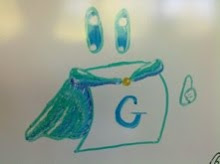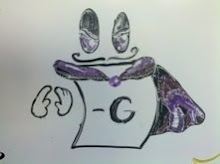I don't yet know how to play go. I just got my set in the mail last Monday, and I'm looking forward to finding someone at Wittenberg to help me get started. Luckily, there is the game NoGo. I may not know just how much this game is related to Go, but at least it is teaching me to play pieces on the intersections of lines instead of the boxes.
NoGo works in the following way: players alternate placing white or black stones on a grid. Each intersection is adjacent to the four connected intersections. In the game, a turn consists of adding one of your stones to the board on an empty intersection. Plays are otherwise restricted only by the following rule: each contiguous group of stones of one color must be adjacent to an empty intersection. Thus the board resulting from any move must have this property, both for your color and stones of the opposing color.
For example, look at these two game states:
On the left-hand-side board, neither player has a move, placing any stone in the lower-left corner will prevent all connected regions from touching an empty intersection. On the right-hand board, the Left player has a move: they can add a black stone. This move connects the two regions, which has two pieces still touching the empty spot. Right does not have a move; no white stone can be placed which will connect to any blank spots.
This game is a bit tricky. Sometimes you want to have more of a presence so that your components are large. Other times, you wish you had smaller connected pieces, feeding off of an empty space.
I don't know how this relates to the grand game of Go (I hope to soon) but NoGo has already been fun to play!




No comments:
Post a Comment